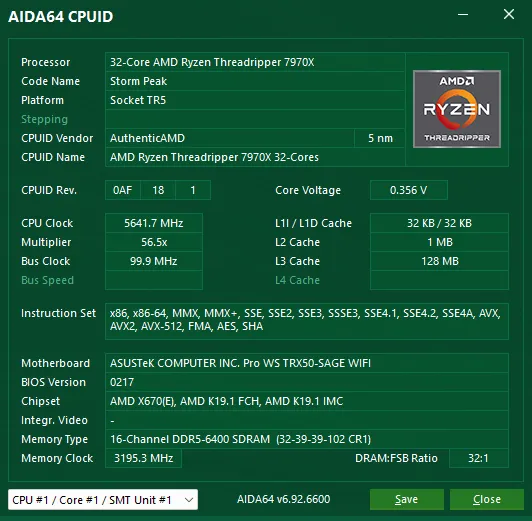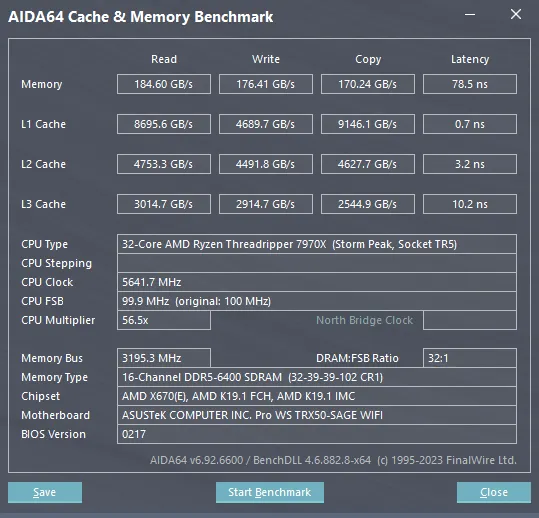Performance - System Memory
When testing computer memory (RAM), three critical performance metrics are often examined: copy, write, and latency. These tests are designed to determine the speed and efficiency with which the memory can handle data under different operations.
Copy: This test measures how quickly the memory can copy data from one location to another within the RAM. It’s a simulation of a common task where large blocks of data need to be duplicated within the memory. High copy speeds can be crucial for tasks that require frequent movement of data, such as video editing or running virtual machines.
Write: Write speed is a measurement of how fast data can be written to the RAM from the processor or another source. This is important because every time a program is run or a file is opened, the system writes data to RAM. Faster write speeds can contribute to a more responsive and swift computing experience, especially when dealing with large files or multitasking between applications that require substantial temporary data storage.
Latency: Latency refers to the delay before a transfer of data begins following an instruction for its transfer. In memory terms, it's the amount of time it takes for a memory request to be completed after it's been made. Lower latency is preferred because it means the memory can start and finish tasks more quickly. High latency can result in a noticeable delay in system performance, especially in applications that require rapid access to data stored in RAM, such as real-time data processing or high-speed trading platforms.



